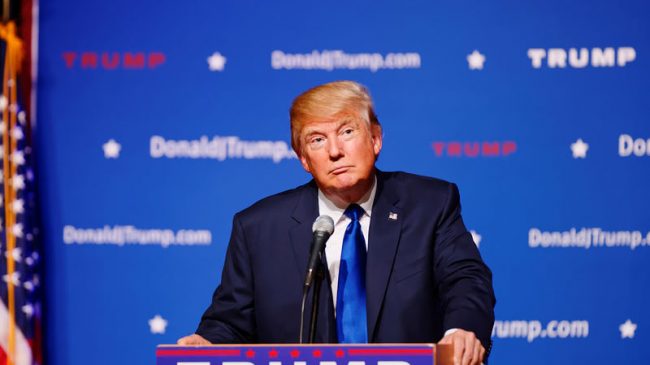As I explain elsewhere in this issue, a major all-sectors infrastructure bill is unlikely in 2017. Other top priorities will dominate congressional time, and the committee structure will make it hard for a comprehensive infrastructure bill even when there is plenty of available time.
Nevertheless, there are two important opportunities that the P3 community should pursue with the new Congress and the new leadership at the U.S. DOT. Both would focus on removing federal barriers to P3 infrastructure investment, along the lines suggested in the $1 trillion Ross/Navarro proposal I discussed here last month.
The most important of these is to create a level financial playing field for P3 infrastructure as part of the 2017 tax reform legislation. While highways and transit P3s have been blessed with the availability of tax-exempt PABs, the current $15 billion cap on such bonds is completely inadequate for a major P3 infrastructure renewal program. Three reforms are needed, and should be advocated forcefully as part of tax reform.
First, expand the concept to P3s for all public-purpose infrastructure: airports, air traffic control, seaports, inland waterways, solid-waste facilities, and water and wastewater infrastructure. Second, in view of this much broader scope, eliminate the cap as inconsistent with an upcoming trillion-dollar-scale infrastructure renewal program. (These two changes were encompassed by President Obama’s QPIB proposal, which unfortunately went nowhere in Congress.) Third, as P3 expert John Schmidt of Mayer Brown has urged, allow these super-PABs to be used for brownfield as well as greenfield projects, since replacing or completely refurbishing existing infrastructure is the primary aim of the Trump infrastructure agenda.
Those three changes would be far more powerful incentives than the tax credit for P3 equity investors proposed by Ross and Navarro. That tax credit is not needed to attract investment in the world’s most desirable market, and in any event is useless for tax-exempt pension funds as well as non-US infrastructure investment funds whose equity capital we should still be welcoming.
The other area to focus on in 2017 is aviation, since the FAA reauthorization bill must be enacted by Sept. 30, 2016. Three specific reforms would enable P3-type replacement and renewal of aging and inadequate airport and air traffic control infrastructure. The United States lags behind our OECD competitors in getting private capital and business management involved in these vitally important infrastructure sectors.
In airports, one reform is to liberalize the 1996 Airport Privatization Pilot Program, so that it encourages airport privatization rather than creating obstacles to it. Sensible changes would (1) remove the limit of only 10 airports and of only certain types, (2) remove airlines’ double super-majority approval requirement for any long-term P3 lease to be allowed, and (3) allow a privatized airport to receive federal airport grants on the same terms as government-run airports. These changes would open up the U.S. market to airport investors, to be more like those of Australia, Europe, and Latin America.
Second, since privatized airports need robust user-fee revenue streams, repeal the 1973 Anti-Head Tax law, which prohibited what we now call passenger facility charges (PFCs) until Congress created a modest exception. There is no national government constraint of like this on airports in Canada, Europe, or Australia, and there is no good reason for it here. This change would also permit at least large and medium-hub airports to do without federal airport grants, enabling that program to be down-sized.
Third, revise and enact the bill offered back in February by Rep. Bill Shuster (R, PA) to divest the Air Traffic Organization from the FAA and convert it into a federally chartered nonprofit corporation similar to Nav Canada. A detailed proposal along these lines was developed in 1994 by Vice President Gore’s reinventing government shop (the National Performance Review), and was embodied in legislation developed by a task force created by then-DOT Secretary Federico Pena. In other words, though now championed by Republicans, ATC corporatization has a bipartisan pedigree.
The ATC corporation would be analogous to the airport authority that took over the former FAA airports—Dulles and National—in 1987. As such, it would no longer depend on aviation taxes and annual political funding decisions (like those two airports used to be stuck with), but would charge its customers fees for ATC services, as nearly all the world’s other ATC systems do. The revenue stream would support issuance of long-term revenue bonds to pay for the $20-40 billion needed to complete the NextGen modernization program and to replace and consolidate the system’s aging and inadequate facilities. The current proposal has the support of nearly all the airlines and—importantly—the air traffic controllers’ union.
None of these are easy changes; all will face opposition from those who benefit from the status quo. But these proposals should receive support from the tax-exempt bond community, which has been worried that comprehensive tax reform might eliminate the tax-exempt status of municipal bonds. Expanding their scope as super-PABs can be seen as a counter-offensive.
The P3 community has a strategic interest in seeing all of these changes enacted, even though expanded airport PFCs and a revenue-financed ATC corporation are not in themselves P3 projects. They are, however, key building blocks toward the President-elect’s trillion-dollar vision of renewing and replacing America’s aging and inadequate infrastructure using private capital.

